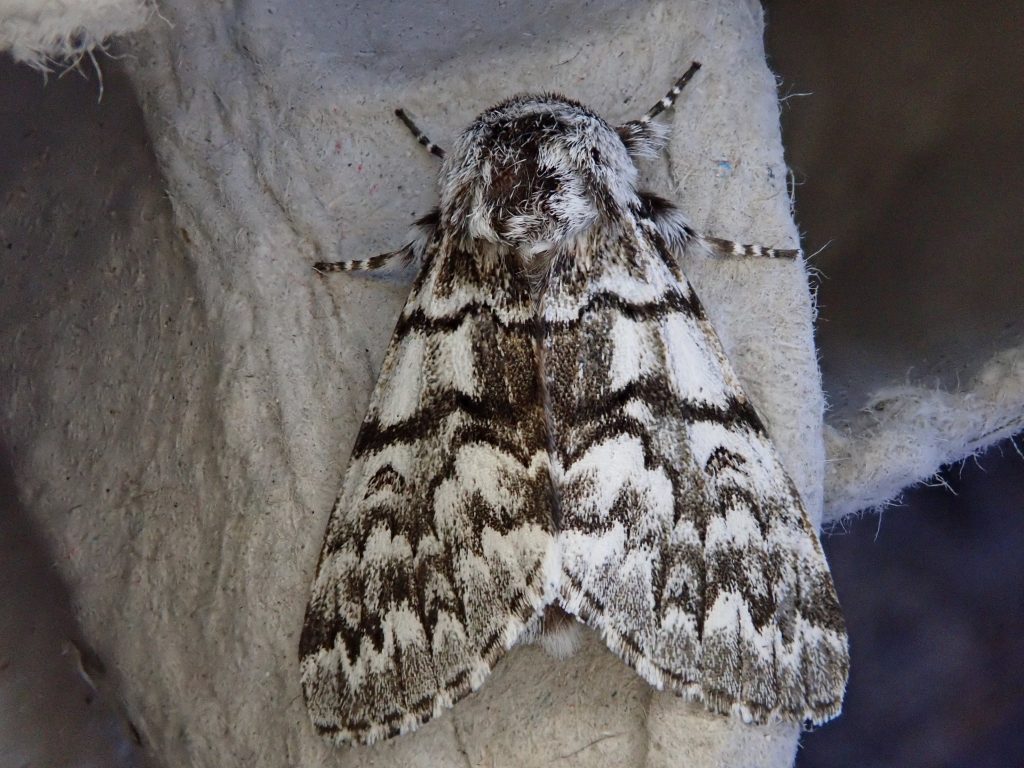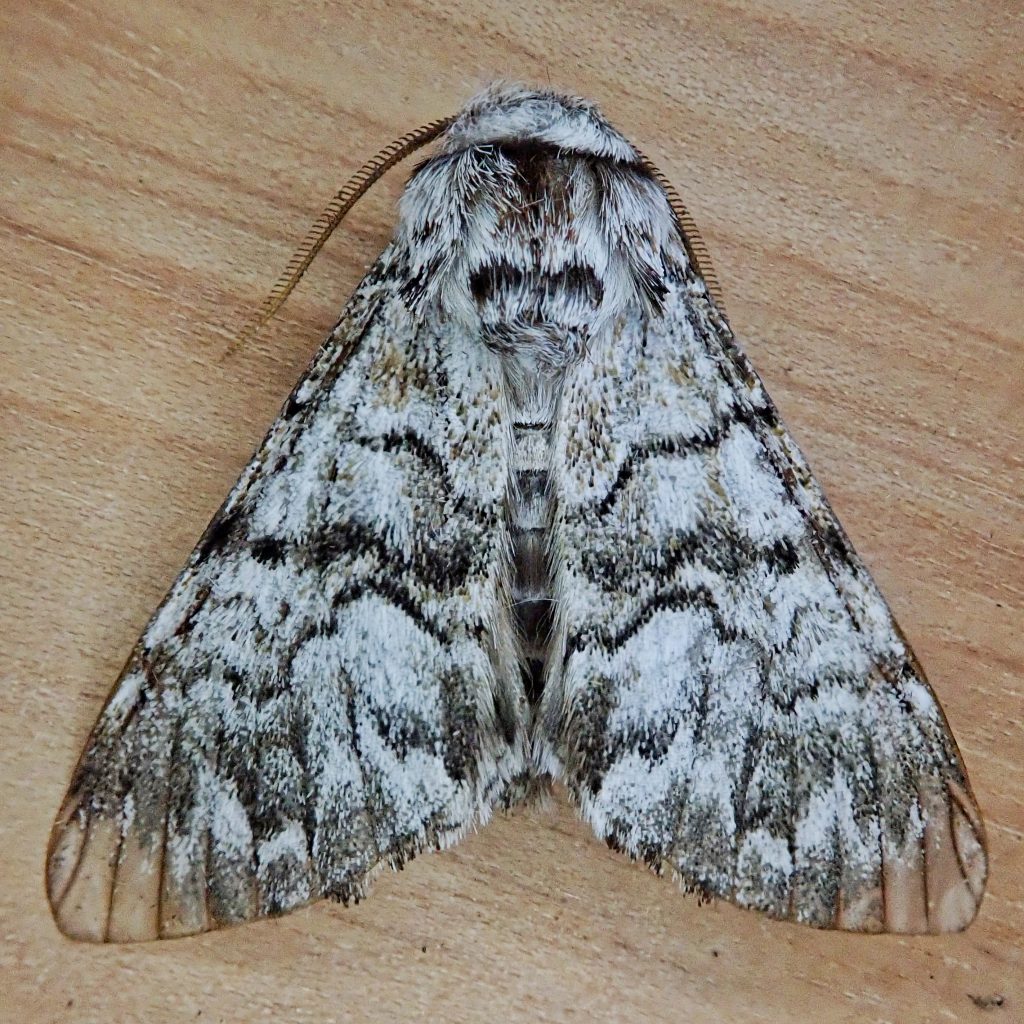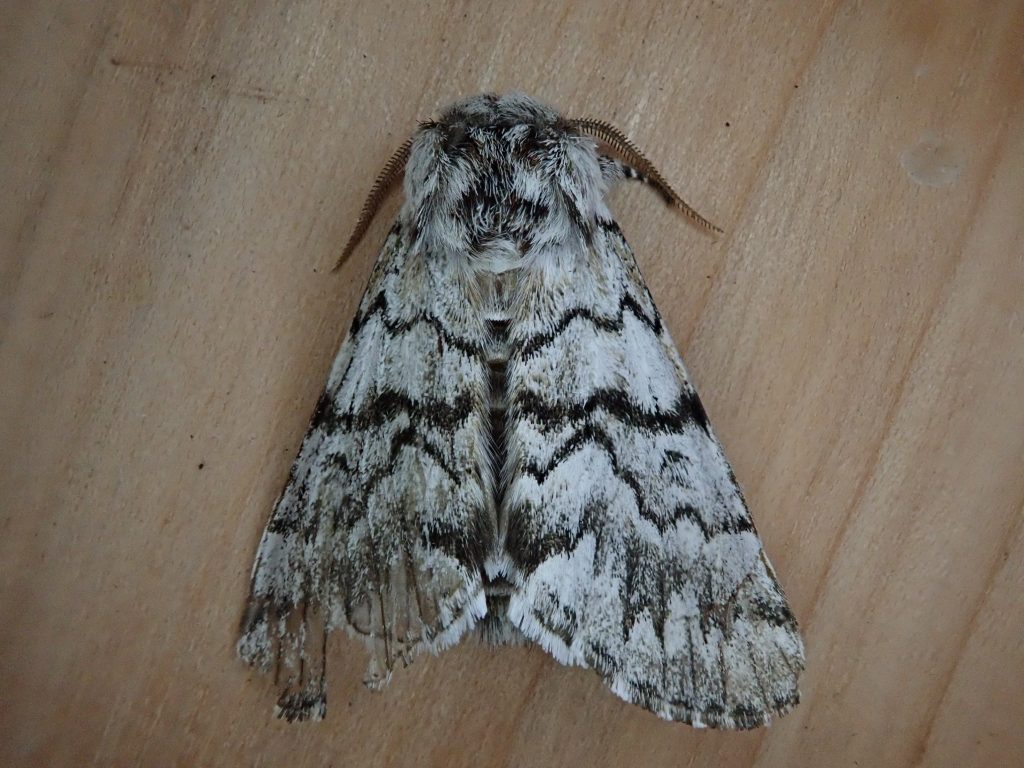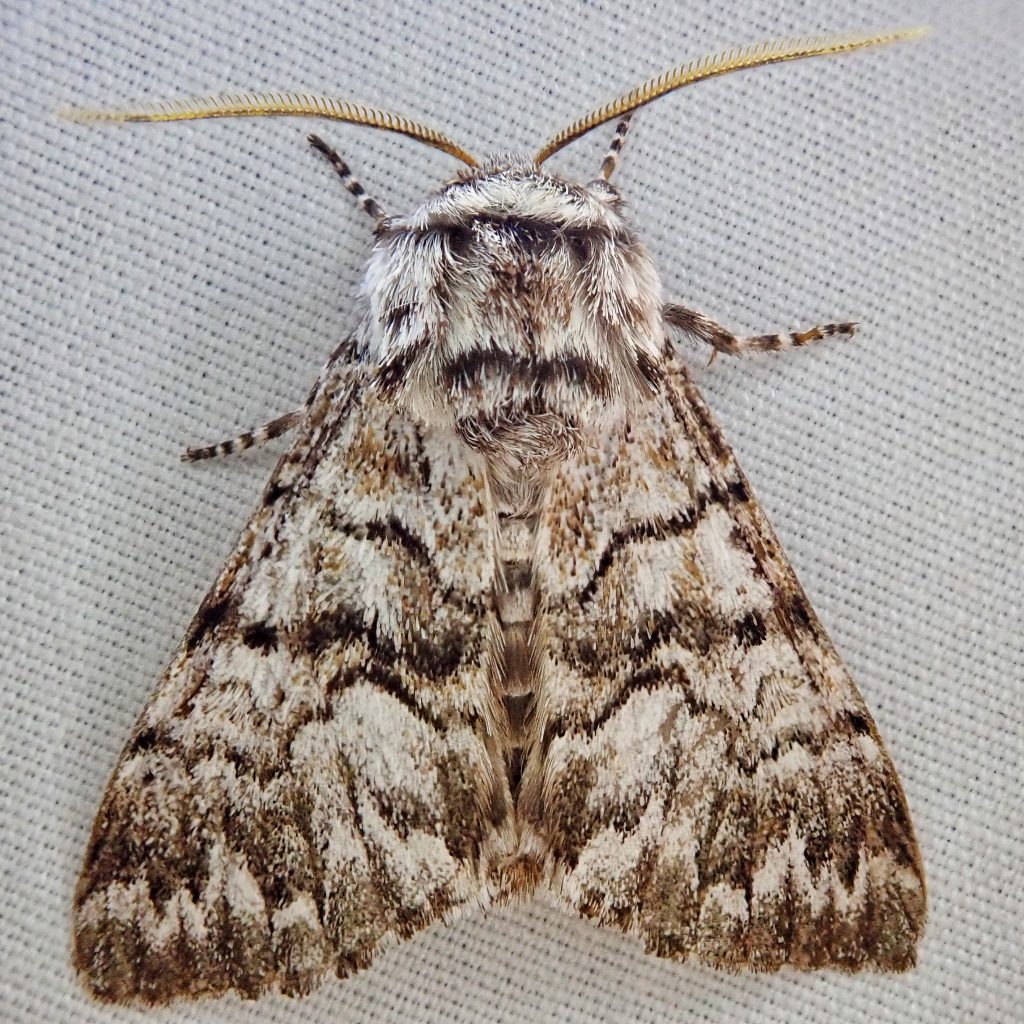
Panthea virginarius is a large black/white/gray Noctuid moth that flies in late spring and summer in coniferous forests. Specimens found in Ponderosa Pine (Pinus ponderosa) forests tend to be darker and grayer, while specimens from Douglas Fir (Pseudotsuga menziesii) forests tend to be whiter and lighter in color, with gradations where these species are mixed. Males are smaller (FW length 20-24mm) than females (FW length 24-28mm). The transverse lines are black, wavy to jagged, and the reniform spot is kidney shaped and small. There usually is no orbicular spot.

The only species in our region with which it may be confused is P. gigantea, but its antemedial line is straight, unlike the irregular antemedial line in P. virginarius.
The larvae only feed on the needles of conifers, in particular Ponderosa Pine and Douglas Fir. The adults have only vestigial mouthparts and do not eat. It can be very common in good habitat.

http://nitro.biosci.arizona.edu/zEEB/leprefs/157-1701-1-PB.pdf
Size- FW length 20-24 mm in males and 24-28mm in females
Habitat- Coniferous forest
Range- Region wide in appropriate habitat
Eats- Larvae feed on the needles of conifers, preferring Douglas Fir and Ponderosa Pine. Adults do not feed.
Flight Season- May to September, peaking in July

So pretty!
Yes they are!